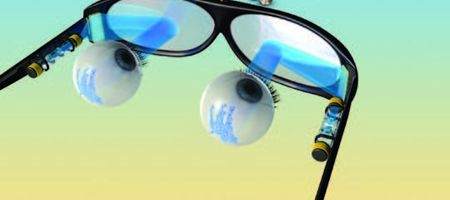Israeli researchers are testing a holographic system designed to artificially stimulate cells in the eye, hoping to create a bionic system for restoring vision.

Computer-generated holography, they say, could be used in conjunction with a technique called optogenetics, which uses gene therapy to deliver light-sensitive proteins to damaged retinal nerve cells.
In conditions such as Retinitis Pigmentosa (RP), these light-sensing cells degenerate and lead to blindness.
“The basic idea of optogenetics is to take a light-sensitive protein from another organism, typically from algae or bacteria, and insert it into a target cell, and that photosensitizes the cell,” says Professor Shy Shoham of the Technion-Israel Institute of Technology.
The plan is to develop a prosthetic headset or eyepiece that can translate visual scenes into patterns of light that stimulate the genetically altered cells.
The team’s demonstrated how light from computer-generated holography can be used to stimulate these repaired cells in mouse retinas. The key, they say, is to use a light stimulus that is intense, precise, and can trigger activity across a variety of cells all at once.
“Holography, what we’re using, has the advantage of being relatively precise and intense,” Shoham said. “And you need those two things to see.”
The researchers have tested their holographic stimulation in retinal cells in the lab, and have done some preliminary work in living mice with damaged retinal cells. The experiments, they say, show that holography can provide reliable and simultaneous stimulation of multiple cells at millisecond speeds.
Bu, warns Shoham, implementing a holographic prosthesis in humans is still a long way off.






